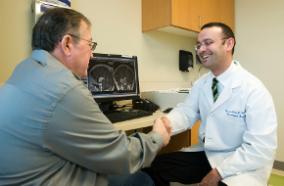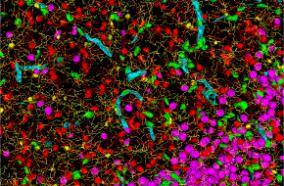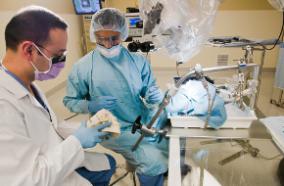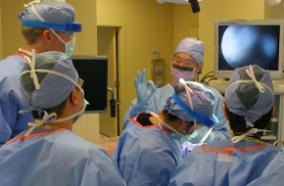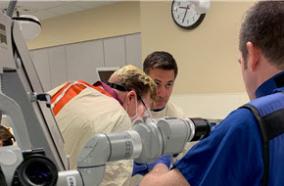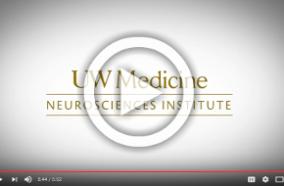2 months 1 week ago
CONCLUSION: We anticipate that comprehensive phenotyping will greatly facilitate the identification of phenotype-specific transcriptional signatures associated with chronic neck and low back pain, revealing new neurobiological and/or neuro-immunological mechanisms of painful diseases.
Michele Curatolo
2 months 1 week ago
CONCLUSIONS: Participants who were reached by the digital outreach intervention codeveloped and disseminated to patients from low-SES communities were more likely to complete LCS.
Jordan M Neil
2 months 1 week ago
CONCLUSIONS: Standardizing QA parameters via injection bias correction improves occlusion prediction accuracy for flow diverter-treated IAs. Adding explainable AI (eg, LIME) clarifies model decisions, demonstrating the feasibility of clinically interpretable AI-based outcome prediction.
Parmita Mondal
2 months 1 week ago
Traumatic brain injury (TBI) is frequently associated with acute and chronic disturbances in sleep architecture. However, the extent to which injury severity and biological sex influence post-traumatic sleep patterns remains underexplored in preclinical models. Here, we used a validated, noninvasive piezoelectric monitoring system to assess sleep in male and female mice following sham (n = 30), mild (n = 32), or moderate (n = 32) midline fluid percussion injury (mFPI). Physiological parameters...
Grant S Mannino
2 months 2 weeks ago
CONCLUSION: PECF under local anesthesia in the lateral decubitus position provides comparably effective pain relief and functional improvement comparable to general anesthesia, though the difference in complication rates was not statistically significant and requires larger studies for confirmation. This technique may be particularly advantageous for patients at higher risk for anesthesia-related complications. Further research is warranted to validate these findings in larger, prospective...
Jason K Lim
2 months 2 weeks ago
CONCLUSIONS: TIB was well-tolerated in pediatric patients with relapsed medulloblastoma, and outcomes were similar to those published in clinical trials. TIB therapy should be considered for patients with relapsed medulloblastoma, especially patients with limited access to care due to travel barriers.
Rebecca Ronsley
2 months 2 weeks ago
CONCLUSION: In patients with sICH after AIS after MT, those selected for DC had less favorable outcomes and similar rates of mortality at 90 days.
Elliot Pressman
2 months 2 weeks ago
Study DesignReview of the literature with critical appraisal and clinical recommendations.ObjectiveTo highlight contemporary concepts relating to surgical care for acute traumatic spinal cord injury (SCI) based on recent evidence that may be integrated into clinical practice.MethodsThree recent articles relating to the surgical management of acute traumatic SCI were selected and critically appraised. Clinical practice recommendations were developed and graded as strong or...
Vanessa Hubertus
2 months 2 weeks ago
No abstract
J Bradley Elder
2 months 2 weeks ago
CONCLUSIONS: SRS was associated with increased symptomatic and mRS Score improvement for low-grade dAVFs compared with conservative management. SRS had a low complication risk and did not appear to alter dAVF obliteration or haemorrhage. Future prospective trials on SRS as a first-line intervention for symptomatic low-grade dAVFs should be considered.
Andrea Becerril-Gaitan
2 months 2 weeks ago
Accurately capturing the temporal distribution of polysomnographic sleep stages is critical for the study of sleep function, regulation, and disorders in higher vertebrates. In laboratory rodents, scoring of electrocorticography (ECoG) and electromyography (EMG) recordings is usually performed manually by categorizing 5- to 10-sec epochs as 1 of 3 specific stages: wakefulness, rapid-eye-movement (REM) sleep, and non-REM (NREM) sleep. This process is laborious, time-consuming, and particularly...
Asad I Beck
2 months 2 weeks ago
Attenuated whole organism vaccines targeting the malaria liver stage reliably confer sterile immunity. These vaccines completely protect female mice from infection, but protection in male mice remains unproven. We discover that male mice vaccinated with prime-and-trap, a whole organism-based vaccine strategy, exhibit poorer protection against Plasmodium sporozoite challenge than females. We investigate this sex difference, and identify vaccinated males have fewer hepatic memory CD8^(+) T cells...
Caroline J Duncombe
2 months 3 weeks ago
No abstract
Randall Matthew Chesnut
2 months 3 weeks ago
CIS43LS is a long-acting monoclonal antibody specific for the Plasmodium falciparum circumsporozoite protein expressed on sporozoites. We previously reported that CIS43LS is protective against P. falciparum infection as detected by thick blood smear (TBS; primary endpoint) in a phase 2 double-blind randomized trial involving 330 healthy Malian adults receiving placebo or a single intravenous infusion of 10 mg kg^(-1) or 40 mg kg^(-1) of CIS43LS (1:1:1). At enrollment, all participants received...
Jeff Skinner
2 months 4 weeks ago
Toxin-antidote systems are selfish genetic elements composed of a linked toxin and antidote. The peel-1 zeel-1 toxin-antidote system in C. elegans consists of a transmembrane toxin protein PEEL-1 which acts cell autonomously to kill cells. Here we investigate the molecular mechanism of PEEL-1 toxicity. We find that PEEL-1 requires a small membrane protein, PMPL-1, for toxicity. Together, PEEL-1 and PMPL-1 are sufficient for toxicity in a heterologous system, HEK293T cells, and cause cell...
Lews Caro
2 months 4 weeks ago
CONCLUSIONS: Patients who received lumbar ESS return to work relatively rapidly compared to the literature on traditional open lumbar procedures. The type of ESS (as dictated by the underlying pathology), as well as patient occupational physical activity requirements impact postoperative RTW.
Peter B Derman
3 months ago
The clinical severity of traumatic brain injury (TBI) is commonly classified according to the Glasgow Coma Scale (GCS) sum score as mild (13-15), moderate (9-12), or severe (3-8). A new approach is needed for characterising TBI more accurately. In 2022, the US National Institutes of Health-National Institute of Neurological Disorders and Stroke launched an international initiative to address this need, with a focus on the acute phase of injury. Six working groups of TBI experts, implementation...
Geoffrey T Manley
3 months ago
CONCLUSION: This study highlights the limitations of medical management for IIAs and underscores the need for early surgical or endovascular intervention in high-risk patients. Outcome predictors aid clinical decision-making, optimizing patient management. Further research is needed to standardize management guidelines for IIAs.
Ali M Alawieh
3 months ago
In the article that accompanies this editorial, a well-designed trial confirmed that hearing can be protected through use of transtympanic thiosulfate injections in patients who receive high dose cisplatin with curative intent. In this editorial, members of the Journal of Clinical Oncology editorial board outline aspects of what constitutes high quality early phase trials with the goal of providing guidance for future JCO submissions.
Thomas E Stinchcombe
3 months ago
No abstract
Techna Cadet
"university of washington"[affiliation] and neurological surge...: Latest results from PubMed
More posts about UW Neurological Surgery Recent PubMed Publications

